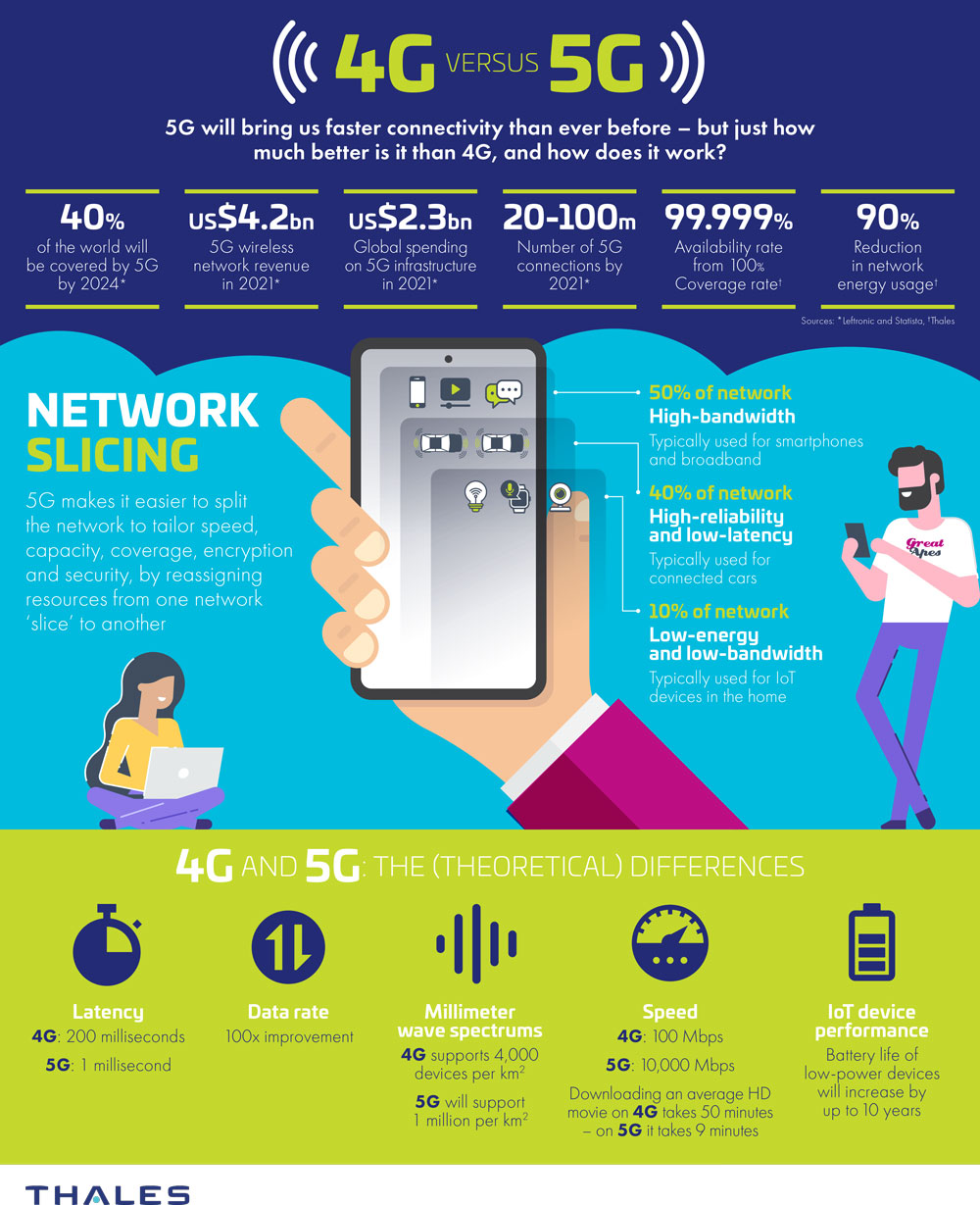In recent years, the world has seen a rapid increase in mobile internet usage. People rely on their smartphones and other mobile devices for everything from entertainment to work, and as a result, demand for faster and more reliable connectivity has skyrocketed. Enter 5G, the next generation of mobile internet connectivity.
So, what exactly is 5G, and how does it differ from its predecessor, 4G? Let’s take a closer look.
First and foremost, 5G is faster than 4G. Much faster. While 4G can deliver download speeds of up to 100 megabits per second (Mbps), 5G promises to deliver download speeds of up to 10 gigabits per second (Gbps). That’s around 100 times faster than 4G. This increase in speed will enable new technologies and applications that were previously impossible or impractical, such as virtual and augmented reality, self-driving cars, and remote surgery.
Another key difference between 5G and 4G is latency. Latency is the time it takes for data to travel from one device to another, and back again. 4G typically has a latency of around 30-50 milliseconds (ms), which is not bad, but not great either. 5G, on the other hand, promises to have a latency of less than 1 ms, which is virtually instantaneous. This will enable applications that require real-time communication, such as remote surgery and autonomous vehicles, to operate much more efficiently and safely.
Coverage is another important factor to consider when comparing 5G and 4G. While 4G is widely available in most parts of the world, its coverage can still be patchy in some areas. 5G, however, promises to have much wider coverage, thanks in part to its ability to operate on a wider range of frequencies than 4G. This will enable people in remote or rural areas to access high-speed internet, opening up new opportunities for education, work, and social connectivity.
Finally, 5G will enable the Internet of Things (IoT) to reach its full potential. The IoT refers to the network of interconnected devices and sensors that are capable of communicating with each other over the internet. With 5G, it will be possible to connect many more devices to the network, and to transmit much more data between them. This will enable the development of smart homes, smart cities, and other innovative applications that will make our lives easier and more efficient.
In conclusion, the differences between 5G and 4G are significant, and they matter for the future of communication. With faster speeds, lower latency, wider coverage, and increased connectivity, 5G will unlock a world of possibilities for individuals and businesses alike. Whether you’re excited about virtual reality, remote surgery, or smart cities, 5G is set to revolutionize the way we live and communicate.
So, if you’re still using 4G, it’s time to start thinking about upgrading. The future is fast approaching, and with 5G, it’s going to be even faster.





